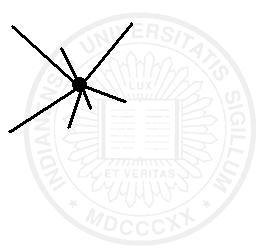| The Torrance Tests of Creative Thinking (TTCT) by E. Paul Torrance Torrance has thee components:
1. Thinking
Creatively with Pictures measures creative thinking using three
picture-based exercises to assess five mental characteristics:
fluency, originality, elaboration, abstractness of titles, and
resistance to closure (i.e., openness, See NEO-PI-R).
- AGE 5+
- Duration: 30 minutes
2. The Figural TTCT contains
abstract pictures and the examinee is requested to state what
the image might be.
- AGE 5+
- Duration: 30 minutes.
3. The Verbal TTCT:
contains presents the examinee with a situation and gives the
examinee the opportunity to ask questions, to improve products,
and to “just suppose.”
- AGE 6+
- Duration: 45 minutes
New examples of TTCT (with permission)
What might this be?

responses:
a
smooshed spider
a star
a set of mini blinds caught in a
tornado
To score the TTCT you will need
"Manual for Scoring and Interpreting Results", obtainable from
the Torrance Center, or from Scholastic Testing Service. The
manual includes national norms, standard scores, and national
percentiles for each age level.
To administer the Torrance you should
have experience administrating tests (e.g., you are a
teacher, counselor, school staff, or work for an accredited
school, college, or governmental agency, or are conducting
research as a graduate student working under a supervising
faculty member)
To order http://www.ststesting.com/2005giftttct.html
The Torrance Center offers training workshops
Guilford’s Alternative Uses Task (1967)
Wallace and Kogan (1965)
Back to Creativity Test: Overview page.
Back to
Creative Thinking Handout Index
|
